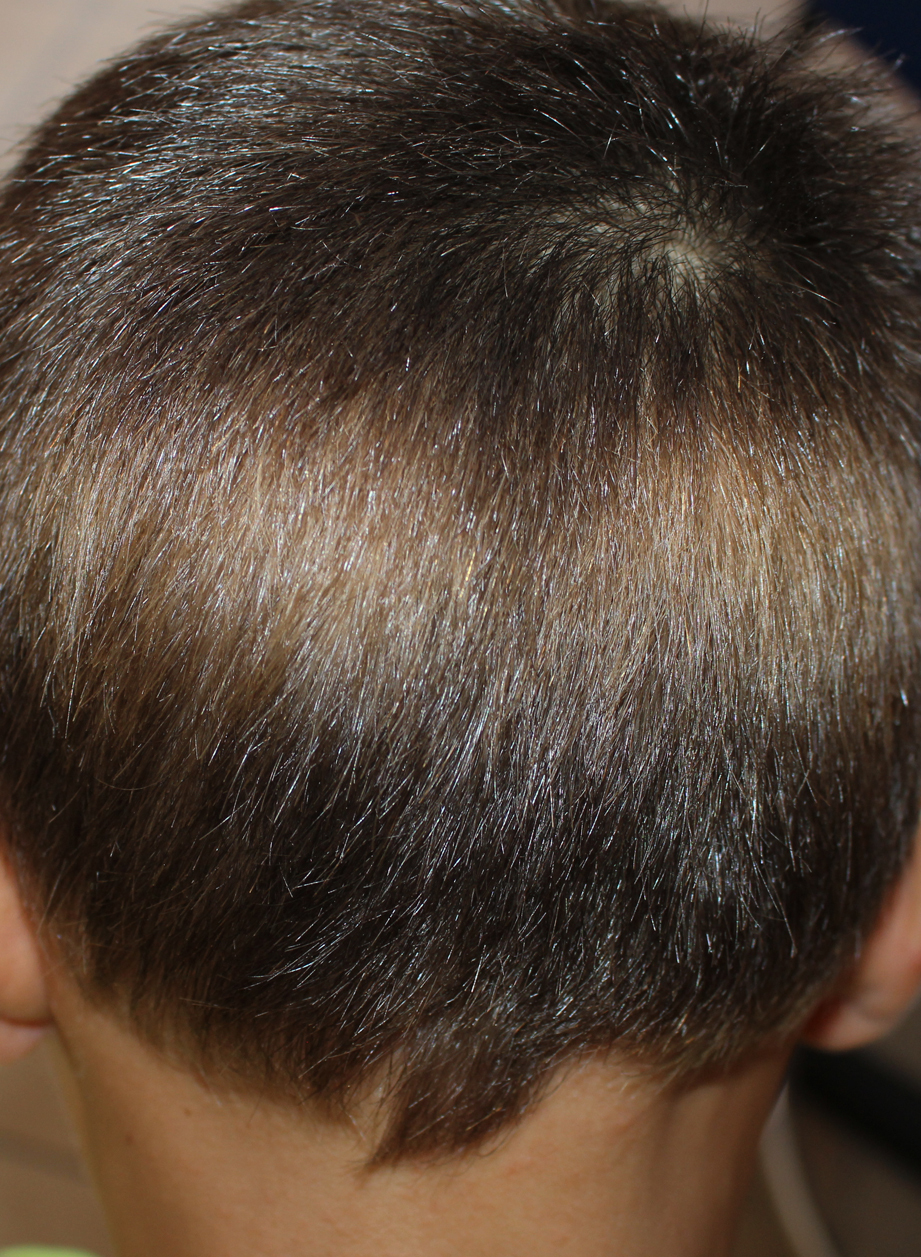Nevus heterochromia of the scalp hair in two brothers.

Downloads
DOI:
https://doi.org/10.26326/2281-9649.29.3.2016How to Cite
Abstract
The band aspect, the early beginning and the indefinite persistence in time speak in favor of a nevus condition, a thesis supported by cases of band heterochromia of the scalp hair associated with contiguous hypomelanic or epidermal nevus, distributed along Blaschko lines (2); even the band heterochromia of our case followed the Blaschko lines of the head (1). In the literature there are no cases of band heterochromia of the hair in brothers, an occurrence that could be explained by paradominance. A paradominant gene is not associated with clinical findings and is transmitted to 50% of the offspring; a post-zygotic mutation of the homologous allele, occurring in brothers with a paradominant gene, leads to loss of heterozygosity in a primordial cell and in the derived cellular clone. The latter is then distributed in the fetal period according to the Blaschko lines.
